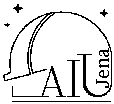Silicates are probably the most abundant cosmic dust materials. The mineralogy
of the silicate dust and its spectroscopic properties are our most traditional
and still very important subject. Since astronomical infrared spectroscopy has
proven in the last years, that cosmic silicates occur both in amorphous and
crystalline states, we deal with silicates in both states and with transformation
processes between them. So we produce amorphous siliactes by melting, laser ablation,
and the sol-gel process, anneal amorphous stuff by temperature treatment,
and amorphize crystals by ion irradiation. The products are analyzed by spectroscopy
in the wavelength range from 0.12 to 2000 micron. Currently, we focus on the extreme wavelengths
such as the vacuum UV (Diploma S. Hummel 2006) and the far-infrared and sub-mm range.
For the latter, we are especially interested in the temperature dependence of the
dust bands and the continuum sub-mm opacity (Boudet et al. 2005, Koike et al. 2006).
The data obtained will help in the interpretation of future observations with Herschel and ALMA.
(Simon Zeidler, Harald Mutschke, Cornelia Jäger,
Collaboration: Claude Meny - CESR Toulouse, Chiyoe Koike - Kyoto Pharm. Univ.,
Thomas Posch - Univ. Wien)

